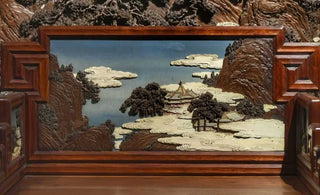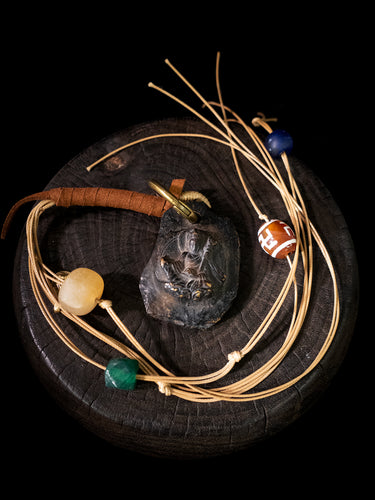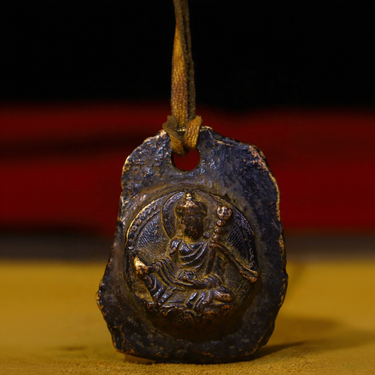
As connoisseurs of classical Oriental art, we at Oriental Aesthetics take immense pride in presenting a detailed exploration of the exquisite world of Chinese Palace Furniture. In this journey through time, we delve into the rich history and intricate craftsmanship that defines each piece, transcending from one dynasty to another.
The Majestic Ming Dynasty: A Glimpse into Opulence
During the Ming Dynasty, spanning from 1368 to 1644, a remarkable metamorphosis unfolded in the realm of Chinese furniture, marking an era of unparalleled opulence and grandeur. This transformative period birthed a distinctive aesthetic characterized by clean lines and a seamless fusion of form and function. Ming furniture, with its timeless allure, has transcended centuries, epitomizing a sophisticated taste that remains eternally relevant.
The choice of materials during the Ming Dynasty played a pivotal role in shaping the essence of Chinese furniture. Elm and rosewood emerged as prominent mediums, each carefully selected for its unique qualities. Craftsmen, imbued with a profound understanding of their art, sculpted pieces that transcended mere functionality, transforming them into masterful works of art. The resulting furniture not only served practical purposes but also became statements of cultural refinement and artistic prowess.
Among the myriad creations of the era, the iconic horseshoe-backed armchairs and intricately carved cabinets stand as indelible symbols of Ming craftsmanship. These pieces, adorned with exquisite details and meticulous ornamentation, graced the halls of imperial palaces, adding an air of regality to the surroundings. The Ming Dynasty, with its commitment to excellence, left an enduring legacy in the world of furniture, establishing standards that continue to exert a profound influence on contemporary designs.
In essence, the Ming Dynasty's imprint on Chinese furniture is akin to a masterpiece that withstands the test of time, a testament to the enduring marriage of functionality and artistic finesse. The echoes of this golden era resonate through the corridors of history, reminding us of an age when furniture transcended mere utility, becoming a canvas for artistic expression and cultural refinement.
The Artistry of the Qing Dynasty: A Symphony of Styles
The Qing Dynasty, spanning from 1644 to 1912, marked a profound shift in the landscape of Chinese furniture, introducing an era characterized by a breathtaking diversity of styles. This period witnessed the emergence of an array of regional aesthetics, with each province contributing distinct characteristics to the evolving tapestry of Chinese design. The southern regions, known for their refined elegance, birthed furniture pieces that embodied a harmonious blend of form and function, reflecting a sophistication that resonated with the discerning tastes of the aristocracy.
Conversely, the northern provinces embraced a bold and robust design ethos, creating furniture that exuded a sense of strength and grandeur. This regional dichotomy not only showcased the vastness of cultural influences but also exemplified the adaptability of Chinese craftsmanship to varying tastes and preferences.
The symphony of styles orchestrated by the Qing Dynasty extended beyond mere aesthetics, permeating the very essence of the furniture produced. Inextricably linked to this period are the exquisite hallmarks of intricate lacquer work and meticulously detailed carvings. These artistic elements became synonymous with Qing furniture, elevating it to unprecedented heights of craftsmanship and aesthetic refinement. The intricate lacquer work not only added a layer of exquisite beauty but also served as a protective shield, preserving the longevity of these masterpieces.
The global recognition of Chinese furniture as a symbol of luxury and refined taste can be attributed to the unparalleled craftsmanship of the Qing Dynasty. Through its diverse regional styles and meticulous detailing, this era left an indelible mark on the world of furniture, securing its place as an enduring legacy that continues to captivate enthusiasts and collectors alike.
Imperial Splendor: Furniture in the Forbidden City
No exploration of Chinese Palace Furniture would be complete without a visit to the Forbidden City in Beijing, an architectural marvel that served as the imperial residence for centuries. This colossal palace complex not only echoes the footsteps of emperors but also harbors an unparalleled treasure trove of furniture spanning various dynasties. Stepping into the Forbidden City is akin to stepping into a living history museum, where each artifact whispers tales of a bygone era.
The vast expanse of the Forbidden City unfolds a mesmerizing panorama of opulence and sophistication. Within its hallowed halls, the collection of Chinese Palace Furniture stands as a testament to the grandeur of imperial China. Opulent thrones, adorned with intricate carvings and gilded embellishments, symbolize the seat of power and authority that once resided within these walls. Elegant screens, intricately painted with scenes of nature or historical events, offer glimpses into the artistic sensibilities of the ruling elite.
The Forbidden City's ceremonial furniture, meticulously crafted with precision and adorned with auspicious symbols, transcends functionality to become a manifestation of cultural identity. Each piece is not merely an object; it is a storyteller, narrating the cultural, social, and artistic nuances of the respective dynasties. From the simplicity of Ming to the ornate designs of Qing, the furniture within these sacred walls reflects the evolving tastes and customs that shaped Chinese society over the centuries.
As one wanders through the Forbidden City, surrounded by the echoes of a regal past, the furniture becomes more than artifacts – they become windows into the lifestyle, aspirations, and aesthetic values of Chinese royalty. It is a captivating journey through time, where the resonance of imperial grandeur lingers in the air, and each meticulously crafted piece invites us to partake in the rich legacy of classical Chinese aesthetics.
Preserving Heritage: The Role of Oriental Aesthetics
At Oriental Aesthetics, we embrace a profound understanding of the cultural tapestry that classical Oriental art weaves. Our commitment transcends the mere provision of professional services; we see ourselves as custodians entrusted with the preservation and promotion of a rich legacy that spans centuries.
In cultivating our curated collection of Chinese Palace Furniture, we stand as guardians of authenticity and champions of uncompromising quality. Each piece within our collection undergoes a meticulous sourcing process, ensuring that every detail, every nuance, is a faithful representation of the classical Oriental aesthetic. Our dedication to authenticity is not just a commitment – it is a promise to our clients that they will experience the timeless allure of classical Oriental art in its purest form.
Whether you are an artist seeking the wellspring of inspiration embedded in the craftsmanship of a bygone era, a collector in pursuit of a masterpiece to grace your collection, or an enthusiast captivated by the beauty of the past, Oriental Aesthetics beckons you. Our curated collection serves as more than furniture; it is a gateway to a world of unparalleled elegance, where every piece narrates a story of cultural richness and artistic mastery. Let Oriental Aesthetics be your guide in this journey through time, where the echoes of dynasties past resound in each carefully selected piece, inviting you to partake in the enduring splendor of classical Oriental aesthetics.
Conclusion: A Timeless Journey Through Dynasties
In the captivating realm of Chinese Palace Furniture, each dynasty unfolds as a chapter within a grand narrative, weaving together a tapestry of artistry and cultural evolution. The Ming Dynasty, with its refined simplicity and timeless designs, laid the foundation for an aesthetic legacy that transcends centuries. The Ming era's emphasis on clean lines and harmonious forms not only reflected the opulence of the time but also set a precedent for the enduring elegance synonymous with classical Oriental aesthetics.
Transitioning through the annals of history, the Qing Dynasty emerges as a symphony of diverse expressions. Its regional styles, ranging from the delicate sophistication of the south to the robust boldness of the north, showcase the adaptability and versatility of Chinese furniture. The legacy of the Qing Dynasty stands as a testament to the boundless creativity and craftsmanship that flourished under imperial patronage, leaving an indelible mark on the global perception of luxury and artistic refinement.
As we embark on this historical journey, navigating through the intricacies of craftsmanship, the symbolism imbued in each piece, and the cultural nuances embedded in the very fabric of Chinese Palace Furniture, Oriental Aesthetics takes on the role of a guiding beacon. We illuminate the path toward a profound appreciation of this extraordinary heritage, meticulously curating a collection that echoes the splendor of bygone dynasties.
Join us in a celebration of timeless elegance, where the journey from dynasty to dynasty unveils not just furniture but a living testament to the rich cultural tapestry of classical Oriental aesthetics. Let each piece be a gateway to the past, inviting you to witness the grandeur of imperial China and immerse yourself in the enduring allure of Chinese Palace Furniture.
























